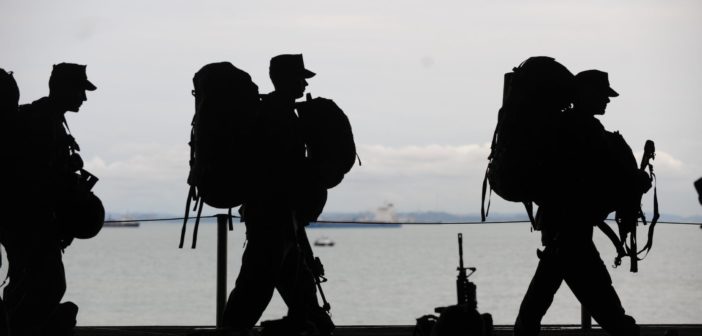By Matthew Beil, Staff Writer
Amidst the annual spring military drills conducted by the South Korea army and the United States came a stern warning from the People’s Democratic Republic of Korea.
The warning stated the PDRK was ready to meet any U.S. or South Korean aggression with the full force of the PDRK’s military and their diverse range of small scale nuclear weapons. Tension along the border between The Democratic Republic of Korea (North Korea) and the Republic of Korea (South Korea) is nothing new. This, however, is the first time that the North has threatened to use nuclear warheads on the U.S. and bases in the Pacific.
The volatile border situation came about after the conclusion of the Korean War in 1953. The war, which began three years prior in 1950 when North Korea invaded South Korea, nearly forced the UN off the peninsula. Several months later, the North Korean forces were almost pushed into China. China intervened, stating their air space had been violated by U.S. planes. China sent a volunteer army into the fray. The result of this returned the front line to the 38th parallel. This lead to a stalemate for the remainder of the war until the armistices was signed. Since then, the two nations on the Korean peninsula have eyed each other with suspicion.
Very recently a new supreme leader took over the PDRK, Kim Jong-un. Kim Jong-un took over after his father Kim Jong-il’s funeral on Dec. 28, 2011. Since then, there has been hope that maybe Jong-un would be more open to negotiations. This, however, seems to have been all but abolished as North Korea has barred southern workers from entering the North and working at the few places there were. North Korea’s threat of using missiles against U.S. bases in the Pacific Ocean has forced the Pentagon to deploy their THAAD (Terminal High Altitude Area Defense system). The Pentagon released this statement on April 3, 2013:
“The Department of Defense will deploy a Terminal High Altitude Area Defense System (THAAD) ballistic missile defense system to Guam in the coming weeks as a precautionary move to strengthen our regional defense posture against the North Korean regional ballistic missile threat.
The THAAD system is a land-based missile defense system that includes a truck-mounted launcher, a complement of interceptor missiles, an AN/TPY-2 tracking radar, and an integrated fire control system. This deployment will strengthen defense capabilities for American citizens in the U.S. Territory of Guam and U.S. forces stationed there.
The United States continues to urge the North Korean leadership to cease provocative threats and choose the path of peace by complying with its international obligations. The United States remains vigilant in the face of North Korean provocations and stands ready to defend U.S. territory, our allies, and our national interests.” (www.defense.gov)
While the Department of Defense strongly believes that North Korea does not have a missile that can reach the continental U.S., the estimated range of the Taepo Dong 2 missile can reach Alaska. Its range also includes U.S. allies in the area such as Japan and South Korea. Secretary of State John Kerry stated in a press briefing after a meeting with the Republic of Korea Minister of Foreign Affairs Yun Byung-se that:
“We’ve heard an extraordinary amount of unacceptable rhetoric from the North Korean Government in the last days. So let me be perfectly clear here today: The United States will defend and protect ourselves and our treaty ally, the Republic of Korea. The Foreign Minister and I also think it’s important to stay absolutely focused on our shared goal of a peaceful Korean Peninsula, free of nuclear weapons. And we agree that improved relations between North and South would ultimately help to move us towards that goal. That is a stated goal of the new President of the Republic of Korea, and we look forward to working with her to achieve that goal.” (www.state.gov)
The U.S and South Korea celebrate 60 years of friendship and alliance. The hope that both the U.S. and the Republic of Korea have is that the Peoples Democratic Republic of Korea will reopen talks, so that a peaceful resolution can be met.





